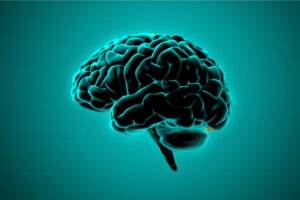What Neuroscience Says About the Brains of Violent People


Written and verified by the psychologist Valeria Sabater
Statistics tell us that in recent years the number of criminal acts has increased. This poses the question, what are the brains of violent people like? Furthermore, is their inclination to violence genetic? Indeed, is there some biological cause behind it, or is it simply the result of a less humane society? The answers to these questions aren’t clear.
There are those who suggest that culture itself is the agent that facilitates many of these behaviors, Furthermore, it teaches and reinforces them. We’ve all heard of conditions like psychopathy, delinquency, or even paraphilias that all exhibit violent tendencies. As a matter of fact, it’s often the social and cultural context itself that prompts the appearance of many of these adverse behaviors
Vicente Garrido is a professor of criminology at the University of Valencia (Spain). He points out that our world has become less egalitarian and more competitive. This can arouse some of these violent behaviors. However, we’re also interested in knowing what exists in the depths of the neurological universe of violent people. In fact, what’s so unique and particular about these people’s brains that can explain the stark reality of such violent behavior?
In this article, we take a look.
“Violence, in whatever form it manifests itself, is a failure for society.”
-Jean-Paul Sartre-

The brains of violent people
In early 2000, Cary Stayner, a man in his 40s, was arrested. He’d violently murdered four women in Yosemite National Park over the course of a year. He was a caretaker in the park. For this reason, he was considered a trustworthy figure, and many people often turned to him for help or advice.
During the trial, he declared that, from the age of seven, he’d been obsessed with the idea of hurting women. His defense alleged he suffered from a mental illness. In addition, they asked for an MRI to identify any neurological abnormalities. However, the judge didn’t want to take this factor into account. In fact, he sentenced Stayner to death by lethal injection.
Some neurologists claim that the existence of cerebral alterations doesn’t explain violent behavior in 100 percent of cases. One such neurologist is Dr. James Fallon. This clinician has spent his whole life performing tomographies on psychopaths in order to demonstrate that there exist very specific anomalies in their brains. As a matter of fact, on one occasion, he decided to perform this clinical test on himself and discovered that his brain exhibited psychopathic features.
In addition, Dr. Fallon discovered that in his paternal family, there’d been at least seven people who’d committed murders. However, for him, factors like having a warm and loving family, probably prevented the development of this “dark” biological determinism. Indeed, there’s definite evidence to support the idea that the brains of violent people have certain peculiarities. We take a look at them here.
The monoamine oxidase gene and decreased serotonin production
Avshalom Caspi and his colleagues carried out a study in 2002. They showed that those children who’d been abused in their childhood showed an alteration in the gene that encodes the enzyme monoamine oxidase A (MAOA). This anomaly has a clear consequence: more testosterone and less serotonin are produced.
All this leads to antisocial and violent behavior. Nevertheless, one striking and hopeful fact is that this violent behavior can be reduced with the administration of Prozac (fluoxetine). This is an antidepressant that regulates and improves the production of serotonin.
Violent people’s brains have less gray matter
Another significant aspect witnessed in people who’ve committed violent acts is an anomaly in the gray matter. Indeed, they exhibit less thickness in the rostral prefrontal cortex and also in the temporal poles. This translates into two very specific facts: less empathy and less guilt.
The lack of conscience when inflicting pain, not identifying with the victim, or not experiencing any guilt when committing a violent act are very recurrent characteristics among psychopathic people.
The amygdala and aggressive behavior
The amygdala is a small area of the brain that’s closely related to the processing of emotions. It’s a complex structure, but essential for survival.
The University of Freiburg (Germany) has recently conducted research concerning the brains of violent people. The study showed that people with a much smaller amygdala exhibit more aggressive behavior. Furthermore, in many cases, hyperstimulation is also seen in this tiny neurological area of the brain.

Frustration and lack of impulse control
It’s clear that the brains of violent people work differently. Furthermore, in many cases, factors such as upbringing, education, and the social environment almost always orchestrate these aggressive bases. There’s one more additional emotional factor to bear in mind. This is the fact that violent people lack resistance to frustration. They also have an absence of impulse control.
As a matter of fact, the violent person experiences a high emotional burden when they don’t get what they want. This is extremely common in childhood. For this reason, it should be regulated at an early age so it doesn’t subsequently become a danger in adulthood.
Mishandled frustration and inability to control their reactions often leads to aggressive behavior with serious consequences. Especially if it’s accompanied by the consumption of alcohol or other substances.
Finally, human behavior is, of course, a part of being human. However, there are biological factors that often orchestrate this behavior. Knowing what these factors are can be both extremely interesting and useful.
All cited sources were thoroughly reviewed by our team to ensure their quality, reliability, currency, and validity. The bibliography of this article was considered reliable and of academic or scientific accuracy.
- Blake P, Grafman J. The neurobiology of aggression. Lancet. 2004 Dec;364 Suppl 1:s12-3. doi: 10.1016/S0140-6736(04)17622-8. PMID: 15967134.
- Blair RJ. The Neurobiology of Impulsive Aggression. J Child Adolesc Psychopharmacol. 2016 Feb;26(1):4-9. doi: 10.1089/cap.2015.0088. Epub 2015 Oct 14. PMID: 26465707; PMCID: PMC4779272.
- Caspi A, McClay J, Moffitt TE, Mill J, Martin J, Craig IW, Taylor A, Poulton R. Role of genotype in the cycle of violence in maltreated children. Science. 2002 Aug 2;297(5582):851-4. doi: 10.1126/science.1072290. PMID: 12161658.
- Flanigan, M. E., & Russo, S. J. (2019). Recent advances in the study of aggression. Neuropsychopharmacology : official publication of the American College of Neuropsychopharmacology, 44(2), 241–244. https://doi.org/10.1038/s41386-018-0226-2
- Interdisciplinary perspectives on psychoanalytic theories of aggression. J Am Psychoanal Assoc. 1979;27(3):655-64. doi: 10.1177/000306517902700308. PMID: 512292.
- Matthies S, Rüsch N, Weber M, Lieb K, Philipsen A, Tuescher O, Ebert D, Hennig J, van Elst LT. Small amygdala-high aggression? The role of the amygdala in modulating aggression in healthy subjects. World J Biol Psychiatry. 2012 Jan;13(1):75-81. doi: 10.3109/15622975.2010.541282. PMID: 22256828.
This text is provided for informational purposes only and does not replace consultation with a professional. If in doubt, consult your specialist.








